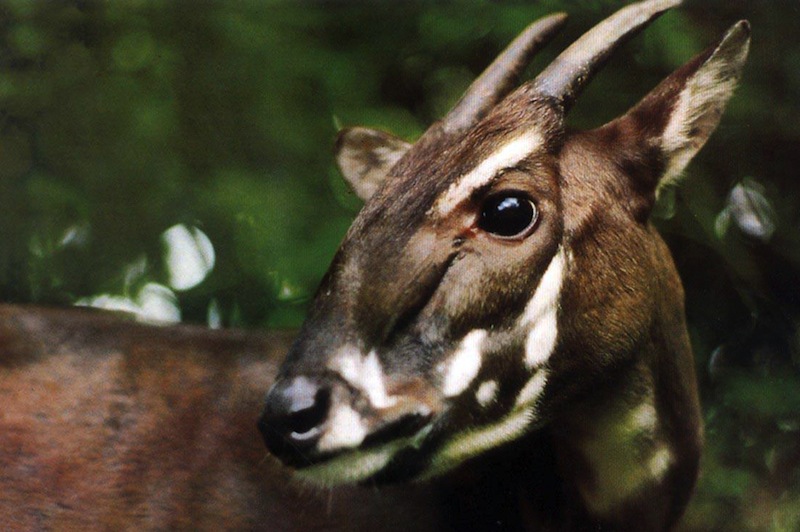HANOI, Vietnam (AP) — A camera trap in a forest in central Vietnam has managed to snap a photo of one of earth’s rarest mammals, the saola, which hadn’t been seen in 15 years.
The antelope-like, long-horned ox appears to walk through dense foliage at the edge of the camera’s range in the image taken in September. Conservation group WWF released the image along with a statement Wednesday.
“This is a breathtaking discovery and renews hope for the recovery of the species,” Van Ngoc Thinh, WWF’s Vietnam director, was quoted as saying.

© WWF-Vietnam
The animal was discovered in remote mountains near Laos in 1992 when a joint team of WWF and Vietnam’s forest control agency found a skull with unusual horns in a hunter’s home. The find proved to be the first large mammal new to science in more than 50 years, according to the WWF.
Two saola were captured in central Vietnam in 1993 but died in captivity after several months.
The last sighting of a saola in the wild was in 1998, according to Dang Dinh Nguyen, director of a saola nature reserve in Vietnam’s central province of Quang Nam.
In the area where the saola was photographed, WWF has recruited forest guards locally to remove snares and battle illegal hunting, the greatest threat to saolas’ survival, the statement said. The snares had been set largely to catch other animals, such as deer and civets, which are a delicacy in Vietnam.
Twenty years since they were first known to science, the elusive mammals remain hard to detect and little is known about them.
At best, no more than few hundred, and maybe only a few dozen, live in the remote, dense forests along Vietnam’s border with Laos, WWF said.
Copyright 2013 The Associated Press. All rights reserved. This material may not be published, broadcast, rewritten or redistributed.






